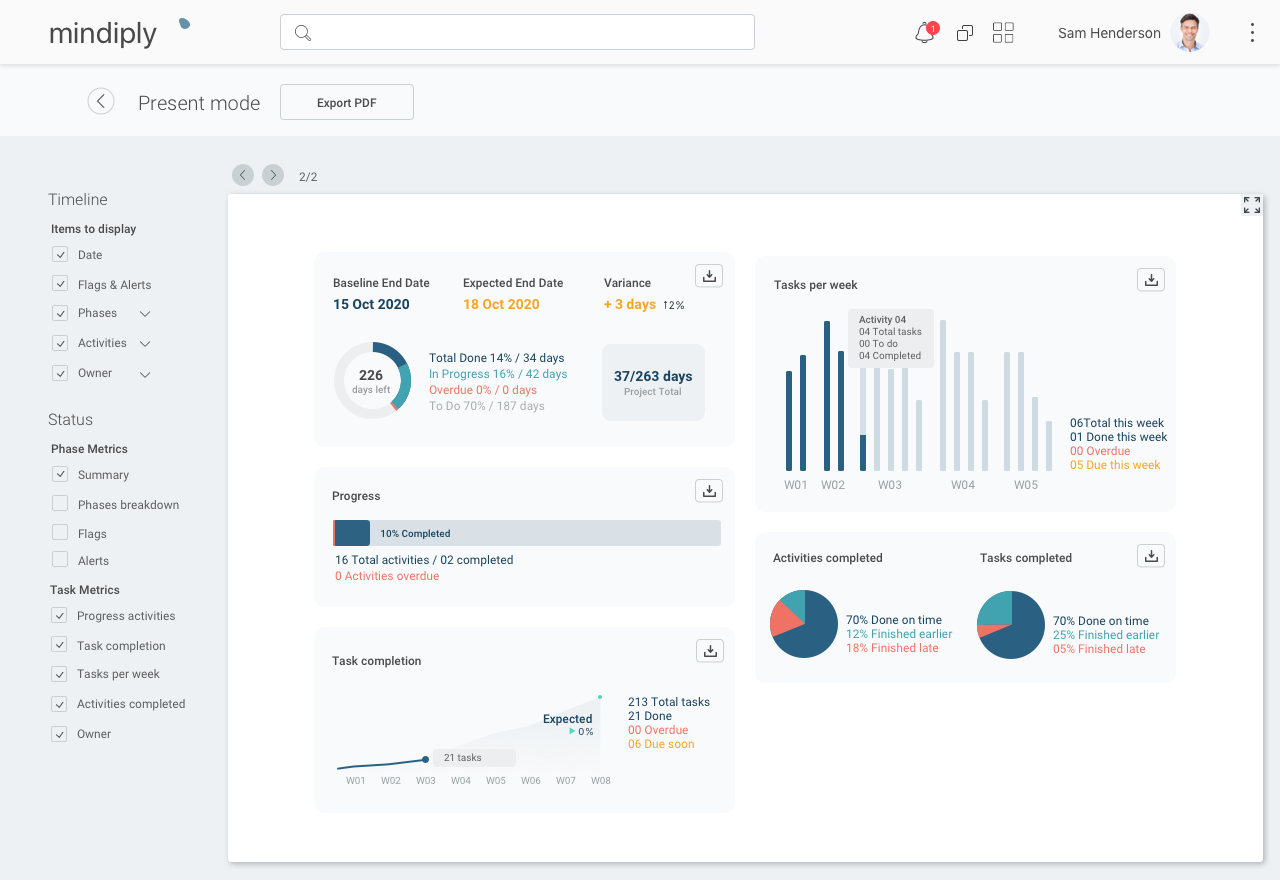
How to avoid some of the most common organisational problems in project management before it’s too late
Francesco Marcatto6 Jun 19
Table of contents
It’s a common mantra that “no two projects are alike”. Even if you are working on a project similar to another one you did in the past, it is very likely that there will be some problems uniquely crafted for that particular project.
This applies to all phases of a project, including, planning, risk assessment, implementation, and so forth. Understanding how to properly identify potential mishaps along the way, and knowing how to successfully implement correct structural changes, can help to overcome these blocks before it’s too late and deadlines can’t be meet anymore.
In the following article, we’ll be covering some of the main organisational roadblocks that may occur within any given project.
Lack of Collaboration
The lack of collaboration stems usually from interpersonal conflict. Emotional noise can hinder interactions, which in turn creates a disconnect in collaborative efforts. Moreover, the lack of collaboration can be a consequence also of poor communication.
One of the key aspects of ensuring that your team members are collaborating is to establish a core set of shared values. It helps to reduce emotional noise and provide common grounds for better collaboration. This should provide context for the team members to alter their conduct towards one another in a respectful manner.
Additionally, creating a structured workflow and assigning clear roles within your team can facilitate collaborative efforts. When roles are established, team members have autonomy over solutions and can interact with one another without shifting the “blame” on anyone.
Lack of Organisation
Disorganisation is a huge source of wasted time. According to a survey conducted by Hiring Trends, 51% of managers say they lose up to nine hours of productivity a week due to desk or office clutter.
Inefficient systems and time management can also lead to missing deadlines or delivering a suboptimal project. If you spend most of your time jumping from one interruption to another, are overwhelmed by urgent but important emails, or are called in for another (useless) meeting, well, you have a problem of organization.
Once more, focusing on what really matters (aka the One thing) can help in solving this problem.
Another approach would be to keep all the sources of distraction and clutter to a minimum. Avoid meetings if they are not 100% necessary and schedule these few ones well in advance. Implement smart communication strategies and interruption-free times.
If you and your team members waste time looking for project-related info, another solution would be to create a digital hub for storing all information and processes, something that is accessible by all team members depending on their roles.
Improper Planning
Without a proper plan, there will be no way that the project will be completed with excellence. Rather, it will lead to other issues, some mentioned in this list, that will hinder the performance of the project.
By taking time to carefully analyze the moving parts of the project, such as deadlines, milestones, and objectives, a project manager can eliminate the “dead time” and ensure a proper flow of all the activities in the project.
Tools that can make you visualise and easily change your plan, such as Gantt charts, are very useful for seeing the big picture and discovering potential blocks in your plan. Research, consult and spend time to finely craft your project plan.
Spending a bit more time in the planning phase can reduce mistakes down the line.
Shifting Priorities
This closely relates to “not having a plan”, but also could be a result of poor leadership. Even though some projects start off with a clear goal in mind, unforeseen challenges, shifts in the market, or stakeholders or clients changing minds, can derail priorities.
Knowing what truly is important within the scope of the project will help your team members establish priorities and stay on track. Therefore, it’s vital that each team member understand their personal priorities, but also the priorities of the project. And when priorities of the project change, everyone involved in executing the project should be updated.
When everyone is on the same page, solutions will come much quicker and will be implemented at a faster pace.
Too many Resources
While technology might seem like the answer to all our project management pains, it can be counter-productive in many scenarios. Implementing new systems, project management tools and software can lead to downtime.
Whenever you provide your team with tools, make sure that everything is working to make their lives easier. If you need to jump from app to app in order to complete a process, you’re probably adding an additional burden. See how you can reduce the complexity of the process by removing some of the unnecessary tools.
It’s important to identify what you truly need to be more efficient. Everything else will simply cost time and money, something that is finite within the lifecycle of a project.
Not enough Resources
On the other hand, perhaps your team doesn’t have the tools they require. Think about how much more difficult it would be to build a desk if you didn’t have a hammer and nails. Of course, while it’s still technically possible to make the desk, you’ll take significantly longer to complete it.
Identify which tools would be able to assist your team in doing their job more efficiently. It’s ok to change from previous tools or learn something new, if you are sure it’s going to speed up the delivery time of the project and ensure success.
Not enough data
Many times, tasks are defined through the data obtained. Poor reporting or insufficient data can lead to lag time within processes. As a project manager, you probably know how frustrating is chasing people for updates on the advancement of their activities.
Once again, good communication is the answer. Define a clear routine for receiving progress updates, and implement frequent and efficient reporting practices. Provide and receive the information that is crucial, ignore anything that it’s not useful for the project.
Of course, once presenting to shareholders and clients alike, the reports can be more robust. However, internally, try to keep the information as concise as possible. Your team members only need the information that pertains to their roles. Anything else would be considered “distracting” and counter-productive.
Bottom Line
There are a number of organisational issues that may arise when you are managing a project. However, by being able to identify what these issues are, and doing the adequate changes promptly, can put the project back on track towards success.
Moreover, now that you know which the most common organisational problems in project management are, you can proactively implement smart management practices well before potential issues arise.
Looking for an online tool that will make your life as a Project Manager easier, and engage your teammates and stakeholders? Try Mindiply Timeline, a new smart tool for project management. Get access to a 30-day free trial here!









